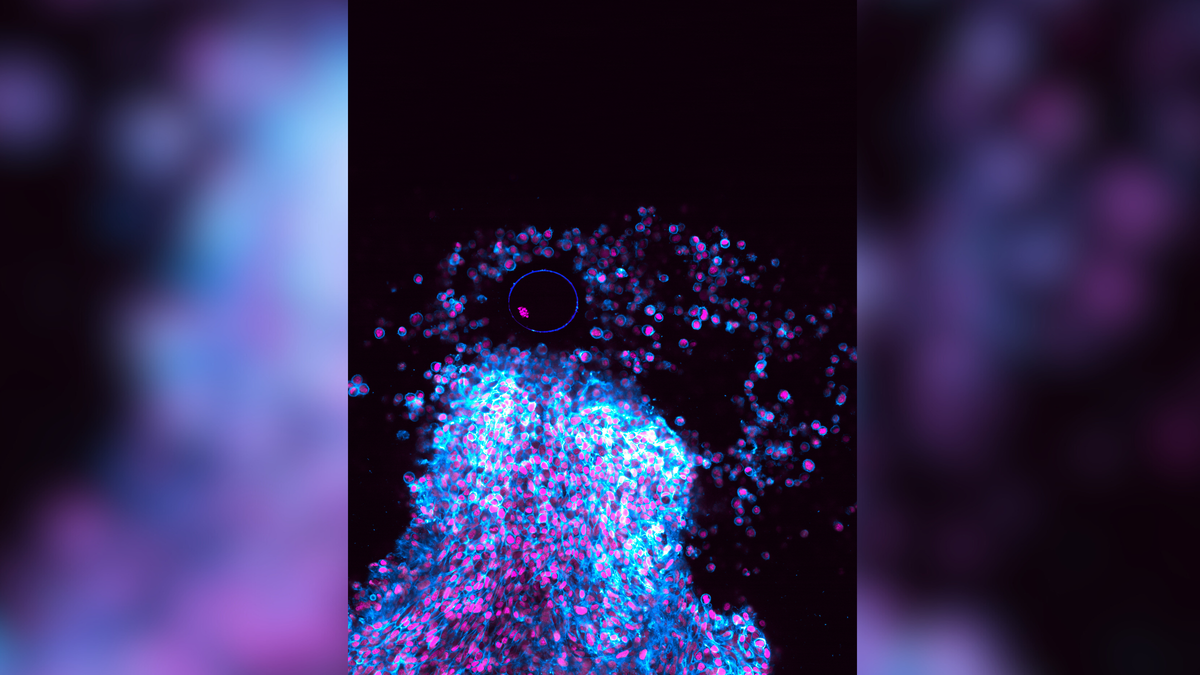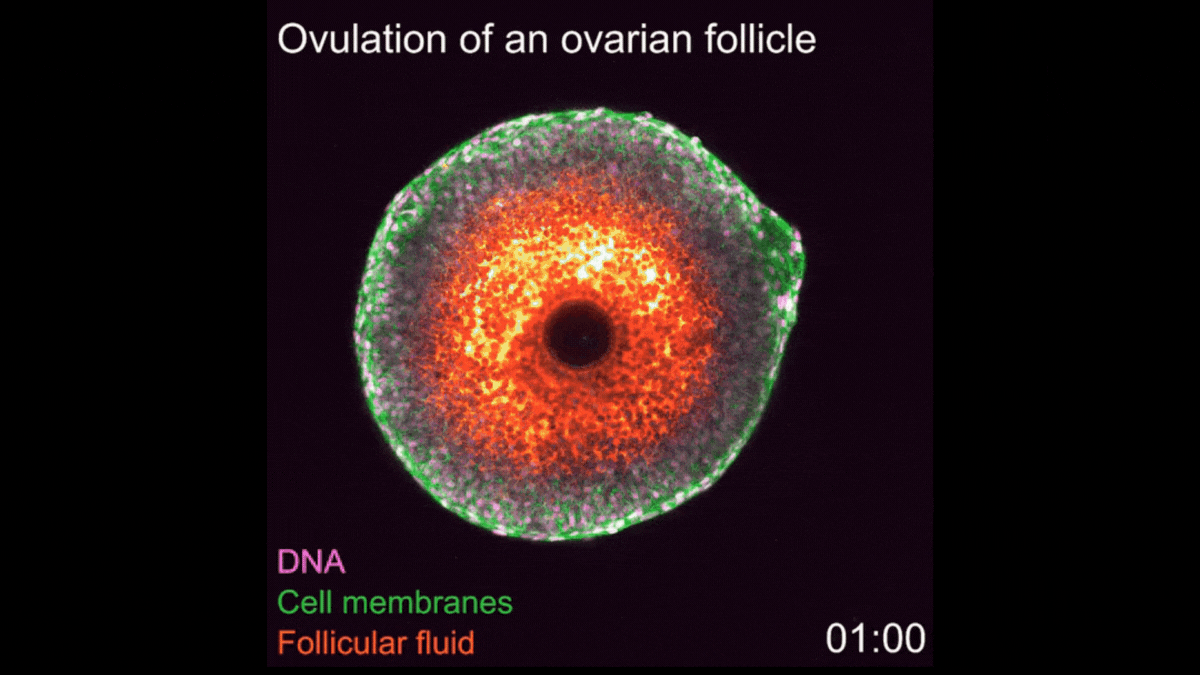For the first time, scientists have filmed the process by which eggs are released from the ovaries during ovulation – and they’ve captured it in exquisite detail.
In impressive new video, a mature mouse egg cell is explosively ejected from its fluid-filled sac – known as a follicle – into a laboratory dish. The team observed follicles that had been isolated from mice and then grown in petri dishes before being encouraged to ovulate with the help of specific hormones.
Researchers captured this moment using a new imaging technique that can be used in living tissue, which they describe in a study published Oct. 16 in the journal Nature Cell Biology.
Ovulation unfolds similarly in humans as in mice. Females of reproductive age usually release a mature egg from their oviduct ovaries in the fallopian tubes around day 14 of their 28-day menstrual cycle. Then, after ovulation, the egg travels through the fallopian tubes to the uterus. If the egg is then fertilized by a sperm cellcan potentially form an embryo; if not, menstruation soon begins and expels the egg from the body.
Related: A third of trans people taking testosterone can still ovulate, increasing the chance of pregnancy
Historically, scientists have struggled to study the mechanisms that control ovulation in living organisms because the process occurs deep inside the body, the authors of the new paper noted. Consequently, most of what we currently know about ovulation has come from looking at tissue that has been removed from the ovaries and then fixed in a solution so that they can be viewed under a microscope outside the body. At that point, the stored tissue is not alive.
In the new study, researchers used the new imaging technique to watch the entire ovulation process unfold in living mouse follicles in lab dishes.
They showed that ovulation occurs in three distinct phases. First, the largest, most mature gland in the ovary expands in size—growing about 1.5 times—over the course of eight hours. This process is stimulated by the secretion of a substance called hyaluronic acidwhich indirectly causes fluid to flow into the follicle. The muscle cells in the outermost layer of the follicle then rapidly contract, before finally squeezing the egg inside.

In separate experiments in the same study, the researchers found that blocking any of these three steps from happening prevented ovulation, meaning the egg was not released. This shows how vital each of the steps is.
“Our findings show that ovulation is an extremely robust process,” co-author of the study Melina Schuhdirector of the Max Planck Institute for Multidisciplinary Sciences in Germany, said in a STATEMENT. “Although an external stimulus is essential to trigger ovulation, subsequent processes operate independently of the rest of the ovary, as all the necessary information is contained within the follicle itself,” she said.
Schuh and colleagues now hope that their imaging technique will be used to further improve our understanding of ovulation and female fertility.
“With our new method, we and other researchers can further investigate the mechanisms of ovulation and hopefully gain new insights into human fertility research,” she said.
Ever wonder why? some people build muscle more easily than others OR why spots appear in the sun? Send us your questions about how the human body works [email protected] with the title “Health Desk Q”, and you can see the answer to your question on the website!

